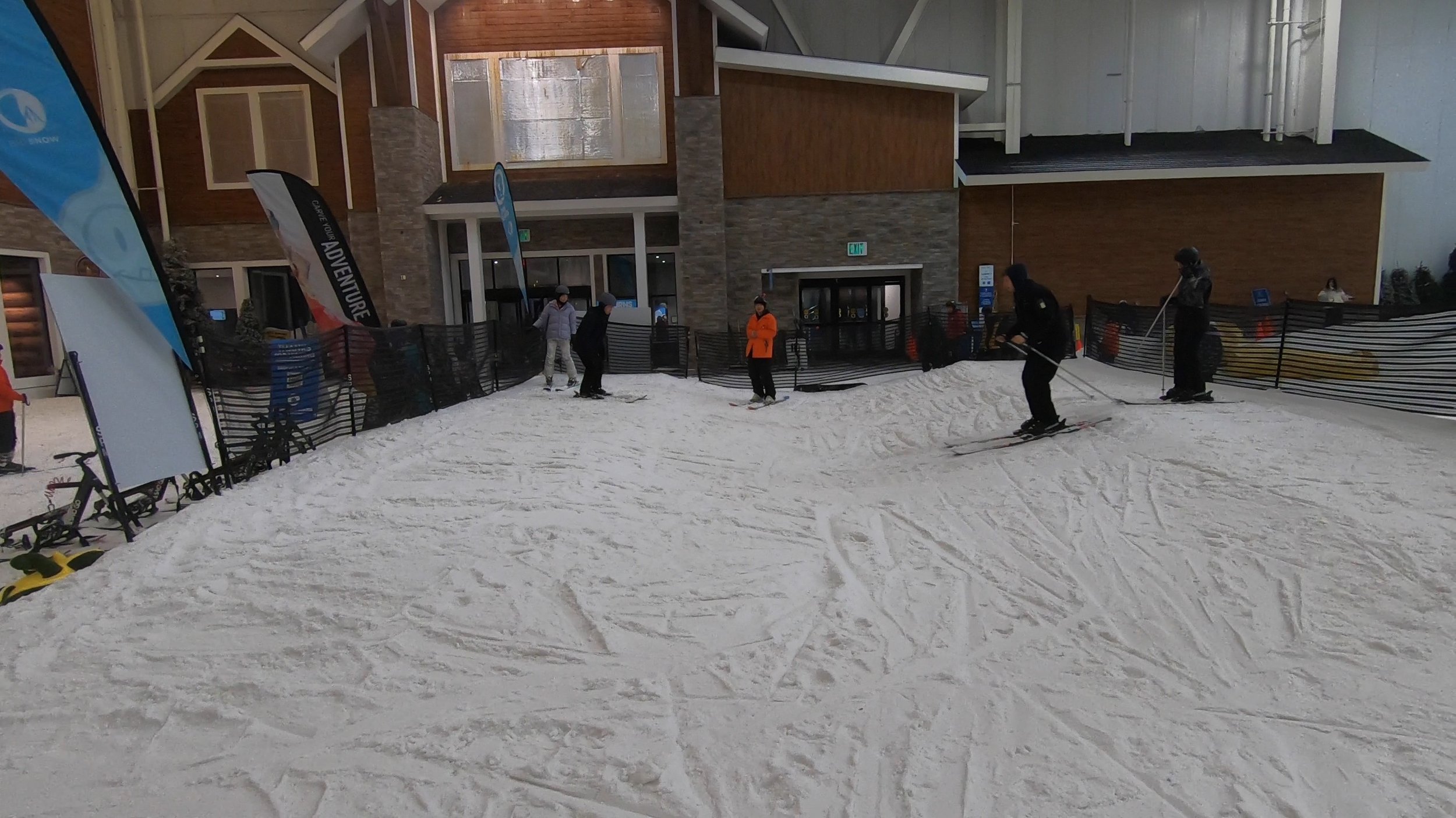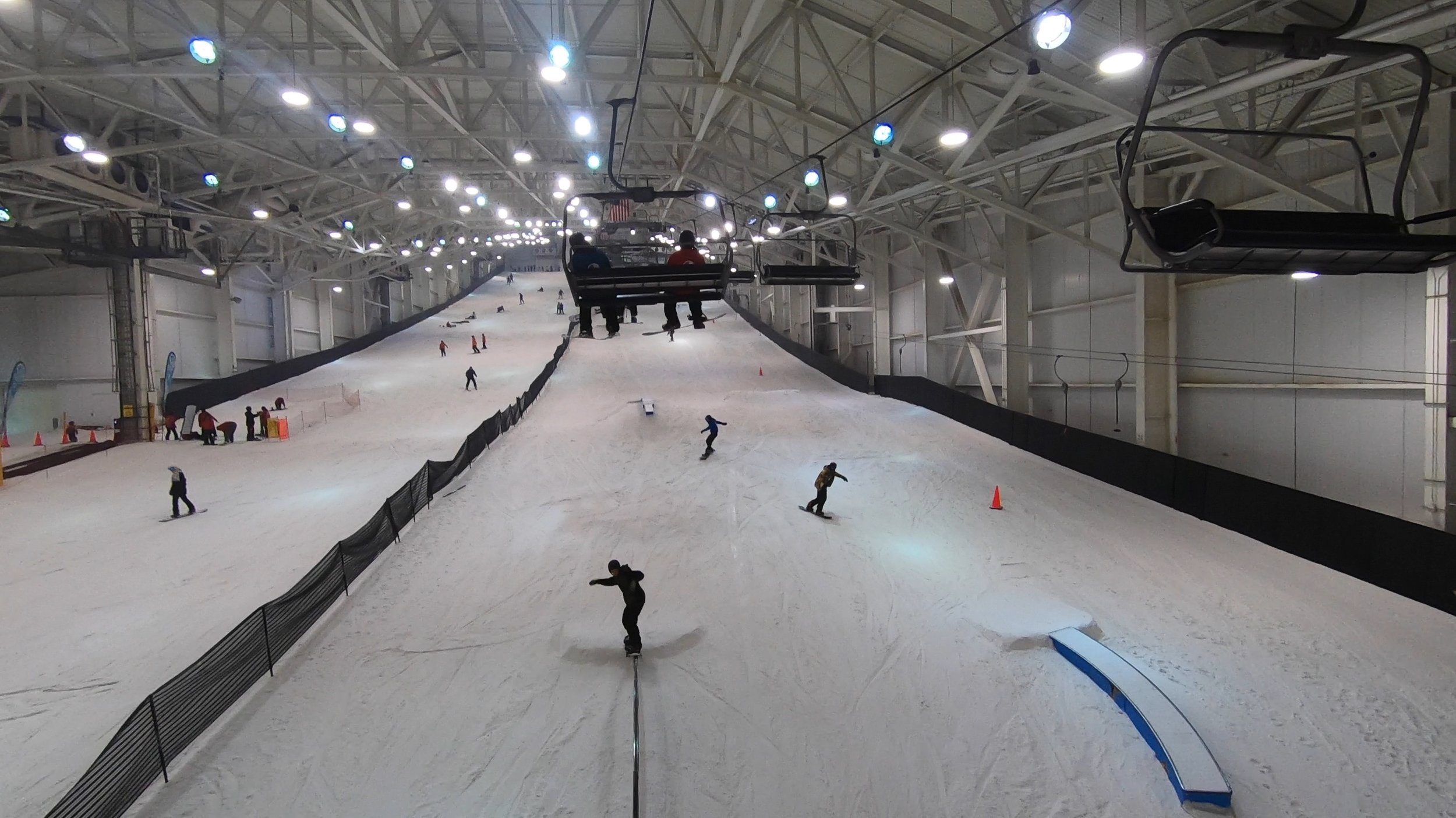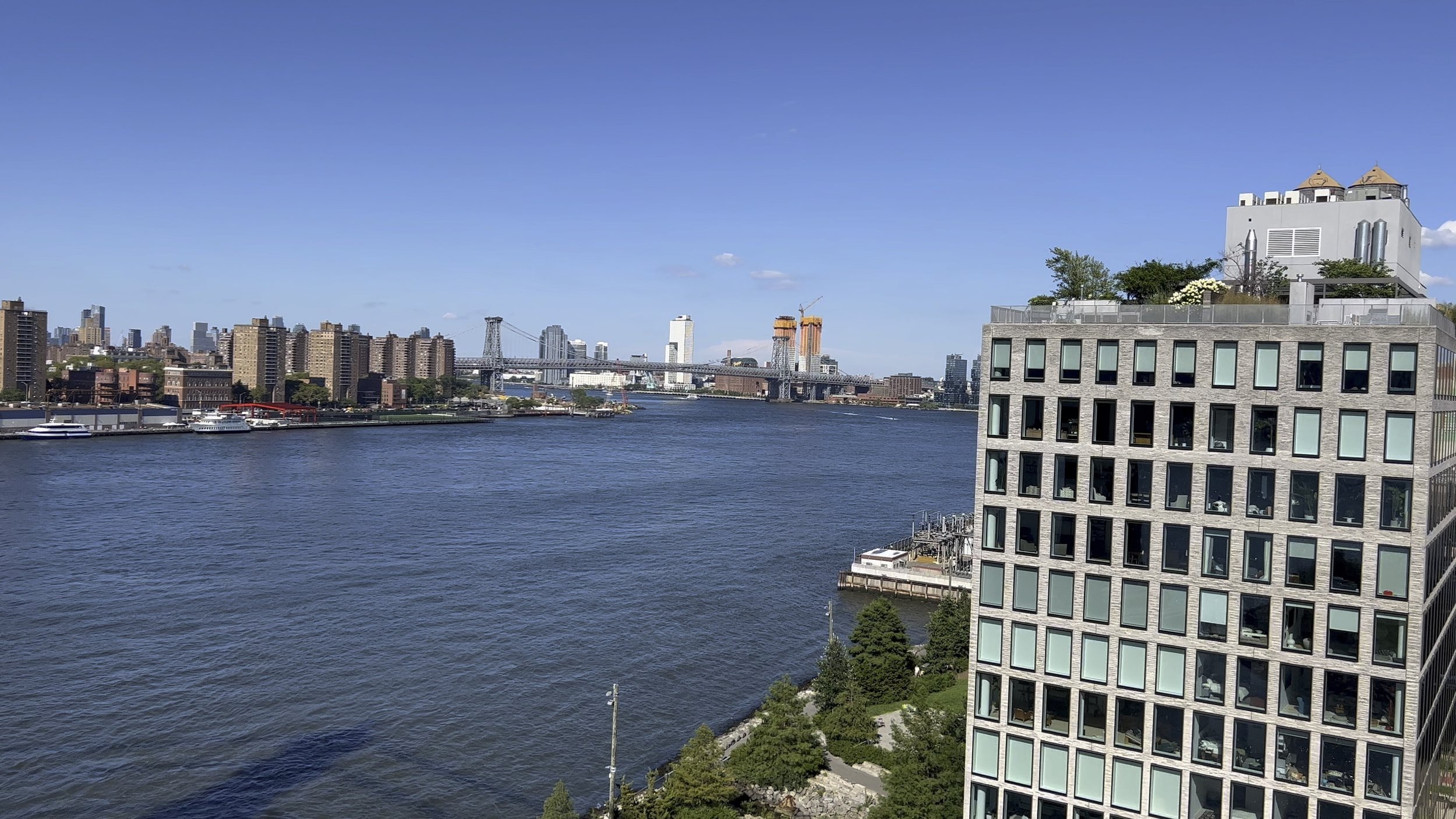Mountain Review: Big Snow American Dream
MOUNTAIN SCORE
CATEGORY BREAKDOWN
See our criteria3
Snow:
10
Resiliency:
1
Size:
1
Terrain Diversity:
1
Challenge:
3
Lifts:
4
Crowd Flow:
3
Facilities:
10
Navigation:
0
Mountain Aesthetic:
GOOD TO KNOW
2-Hour Ticket: $50 ($90 with rentals)
Pass Affiliation: None
On-site Lodging: No
Aprés-ski: Limited
Nearest Cities: New York (30 mins)
Recommended Ability Level:
+ Pros
One-of-a-kind indoor skiing complex
Year-round skiing and riding
Learning-oriented slope setup
Proximity to New York City and suburbs
– Cons
Extremely small, repetitive footprint
Lack of even modestly challenging terrain
Crowd management
Commercialized feel
MOUNTAIN STATS
Skiable Footprint: 4 acres
Total Footprint: 4 acres
Lift-Serviced Terrain: 100%
Top Elevation: 446 ft
Vertical Drop: 160 ft
Lifts: 4
Trails: 4
Beginner: 50%
Intermediate: 25%
Advanced/Expert: 25%
VIDEO
Mountain Review
Thought you’d seen it all in the ski world? Try Big Snow American Dream, a ski resort so unorthodox it’s not even a mountain—instead, it’s a man-made construction that’s fully indoors.
Big Snow sits in New Jersey’s American Dream Mall, right next to the Meadowlands Stadium and only a short drive from New York City. This indoor complex maintains the same just-below-freezing temperature all the time and remains open year-round, but is it a substitute for a true ski trip? Well, it depends what you’re looking for.
Resort Size and Layout
The first thing you might be wondering about Big Snow is, how can they fit an entire ski resort into an indoor mall? Well, it turns out that Big Snow isn’t actually that big—with just a 4-acre footprint, the complex is downright minuscule compared to every outdoor mountain we’ve been to. As a result, anyone who’s been to a real mountain before will cover the whole footprint in 15 minutes tops.
With just a 4-acre footprint, Big Snow American Dream is the smallest ski resort we’ve ever tested.
Trail Difficulties
Across its 160-foot (50-m) vertical drop, Big Snow is made up of what are basically three trails across one continuous slope (there are technically four trails, but the blue-rated Switchback and green-rated Perfect Slope trails are really just different halves of the same run). Despite trail ratings ranging from green to black, these runs are all of fairly similar difficulties. The upper part of the complex is steeper than the lower part, featuring a typical low-intermediate pitch, and about halfway down, it mellows out to beginner-level terrain. The easiest run, Lil’ Dipper, actually involves a banked slalom to keep its pitch as leisurely as possible.
Big Snow does have a black-diamond rated trail, but it’s not true advanced terrain—if you take a look at the trail map, the resort marks it with a “More Difficult” rating, something that you typically see attributed to blues at other resorts. In fact, the black run is just a terrain park with the exact same pitch as the neighboring blue trail, meaning that if you stay clear of the features, it’s no more difficult. Big Snow’s terrain park is arguably the most interesting part of the resort for anyone who isn’t learning; features range from small to medium and include boxes, rails, jumps, and jibs.
TRAIL MAP
First-Time Beginner Setup
Big Snow has a very strong setup for first-timers. The complex is designed with beginner progression in mind, and the easiest “slopes” are literally flat ground or rolling mini pipes that don’t even require a lift to access. The green runs have their own dedicated magic carpet, meaning that guests don’t have to get on the chairlift to hit the complex’s easiest terrain.
Rolling mini pipes like these allow first-timers to start on the slopes without even boarding a lift.
Lifts
Big Snow’s lift system is pretty basic but gets the job done for the resort’s purpose. Two lifts serve the full vertical of the resort: one fixed-grip quad and one surface lift, while the two aforementioned magic carpets serve the bottom half. Despite the quad’s slow speed, it only takes two minutes to ride with no stoppages, and isn’t that much longer in the event of misloads.
Snow Conditions
But when it comes to making Big Snow’s slopes skiable, does the complex actually make use of real snow—and if so, is it any good? Well, it turns out that the snow is real, but it’s produced artificially by snow guns. The resort employs snowmaking to ensure a consistent base every day it operates, and paired with the controlled climate conditions, this results in what’s probably the most dependable footprint of any ski area on the continent. However, the snow produced isn’t exactly plentiful, and the base can actually get pretty thin—or even icy in certain spots towards the end of the day. Big Snow typically employs snowmaking after hours, so if you arrive earlier in the day, you’ll be less likely to hit skied off terrain.
RECOMMENDED SKIS/BOARDS FOR BIG SNOW AMERICAN DREAM
NOTE: We may receive a small affiliate commission if you click on the below links. All products listed below are unisex.
Recommended beginner ski (adult)
Recommended beginner ski (kids)
Recommended beginner board (adult)
Recommended beginner board (kids)
Crowds
While Big Snow does have a capacity limit—two-hour lift passes are restricted in quantity—lines do build up at the quad lift, even during moderately busy times. A couple of factors compound the issue: lift operators don’t do a great job of filling chairs up to capacity, even when there are singles and doubles who could ride up together, and the beginner-oriented bent of the complex results in a lot of chairlift misloads and regular stoppages.
The beginner-heavy environment also results in lots of people falling unexpectedly on the slopes—even on the blue and black runs. Such incidents happen commonly on bunny hills, but they may catch more experienced guests off guard. Visitors who haven’t spent time in a dedicated learning zone recently should make sure to keep an extra eye out for other guests on all of Big Snow’s slopes.
Arriving earlier in the day typically allows guests to avoid the crowds.
Lines can build up at Big Snow’s quad lift, even during moderately busy times.
Indoor Scents
While nobody will mistake Big Snow for an outdoor destination ski resort, the complex makes an amusing effort at trying to replicate the experience as much as possible. Upon entering the rental area, guests will be greeted by an aroma reminiscent of pine—this is an intentional choice designed to evoke a sense of being surrounded by a wooded environment. The complex also pumps in scents reminiscent of a bakery on the slopes. This one perplexed us at first, but upon asking resort staff, we were told this was intended to remind guests of waffle cabins—even though there is no such cabin at the Big Snow complex.
Operating Schedule
Big Snow employs a different operating schedule than most other mountains. The complex’s lack of sun exposure means that it’s not dependent on daylight to provide access to its slopes, and the resort bases its opening and closing times on expected demand. Big Snow opens later than typical mountains, starting operations at 1pm Monday through Friday and 10am on weekends, and closes later as well, shutting down at 8pm Sunday through Thursday and 9pm Friday and Saturday. This means that if you live in the New York City area—and especially in the New Jersey suburbs—Big Snow is a viable option for some quick laps after work or school.
As the only ski resort in North America independent of outdoor weather conditions, Big Snow is open nearly every day of the year (the complex only closes for private events, and is even open on major holidays, including Christmas, New Years’, Memorial Day, and Independence Day). While one might expect the slopes to remain the same no matter when you go, the resort’s summer experience actually tends to differ slightly from the winter experience. Summer tends to be less busy than late fall and winter, which results in better snow preservation, fewer crowds, and less frequent chairlift misloads.
Big Snow sits right across from MetLife Stadium, which hosts professional football games and concerts, among other events.
Photo by Donnie on Wikimedia Commons
Nearby Activities
One of the most unique aspects of Big Snow is the availability of other activities within steps of the slopes. The resort sits right next to the MetLife Stadium, which hosts professional football games and concerts, among other events. As a result, guests can get some skiing or riding in before seeing an A-List artist or watching the Giants or Jets play live—try to name another resort where you can do that! Big Snow’s host mall also features a number of other attractions, including a Nickelodeon theme park and indoor water park; these all feel really commercialized, but they might be fun if you have kids.
Pricing
Big Snow prices its access differently than most outdoor ski hills. Unlike typical resorts, which sell tickets in full-day increments, Big Snow’s default access ticket is for two hours only. That said, the complex is so small that this is more than enough time for most visitors. Guests must choose a specific entrance time to access the slopes when purchasing a ticket—and must also wear a special bracelet to track the amount of time spent in the snow dome.
Big Snow also offers a monthly “subscription” pass which provides unlimited complex access with select holiday blackouts. The SNOW Pass Subscription goes for a $299 initiation fee, then $99 per month after that; this pass pays off after six two-hour increments for the first month, and just two two-hour increments in subsequent months. In order to spend more than two hours at the resort without buying this pass, guests will have to purchase multiple tickets.
Big Snow tickets comes standard with two hours of access for $50. Rentals can be added for total of $90.
Rental Packages
If you don’t want to lug your gear all the way to the complex, Big Snow offers rental packages to go along with lift access. These packages include jackets, helmets, and snow pants; glove rentals can be purchased as an extra-cost add-on. At $89 per two-hour session for lift access and rentals, the package is a decent deal compared to many outdoor ski resort rental shops.
Getting There
Big Snow is just outside New York City, with the complex accessible via a short drive from Manhattan, Staten Island, and Jersey City. Drive times will vary depending on the time of day, but from midtown Manhattan, it’s about half an hour away. Big Snow is a slightly longer jaunt from Brooklyn, Queens, and the Bronx. Parking is readily available at the American Dream mall but costs $5 at all lots (assuming one stays for more than 30 minutes, which the overwhelming majority of guests will).
There is no regular public transportation to Big Snow. On game, concert, or event days, New Jersey Transit does provide bus and train services to the nearby stadium, but these often-packed transit options run on very specific schedules and won’t be the most enjoyable ways to transport to Big Snow.
Big Snow sits less than an hour from New York City, although public transportation is difficult or impossible.
Lodging
For the very small minority of visitors who actually want to stay at Big Snow overnight, there are actually a fairly large number of lodging options available. Several hotels ranging from bargain-basement to upscale can be found in the Meadowlands Complex surrounding the mall, and dozens more hotels and Airbnbs exist within a very short driving distance of the hill. Guests may find it fun to stay in nearby Jersey City or New York City, which obviously host more accommodations than one can count.
Aprés-ski
Guests expecting any sort of real aprés environment will be sorely disappointed with Big Snow. The resort primarily attracts visitors who spend a few hours on the slopes and then leave, and the majority of these guests are either school-age individuals or their parents. The American Dream mall does feature a number of bars, but these establishments lack any sort of ski town atmosphere. If aprés is a priority, there’s no question that leaving the mall and heading back to New York is the way to go.
The American Dream mall hosts bars and restaurants, but they’re not designed for a ski town atmosphere.
Verdict
As the first-ever indoor ski resort in North America, Big Snow is almost as much a novelty as it is a resort. But once the initial awe of skiing indoors wears away, it becomes apparent that the resort is primarily designed as a learning hill, with a stronger emphasis on early progression than anything else. First-timers may benefit from hitting Big Snow before going to a real outdoor ski resort, but while powder enthusiasts who really miss the winter may enjoy a few laps here, the complex otherwise won’t be a fit for more experienced guests. At $50 per two-hour session, Big Snow isn’t a bad deal for what it offers—and luckily, most visitors won’t need more than that to appreciate the full experience.



















